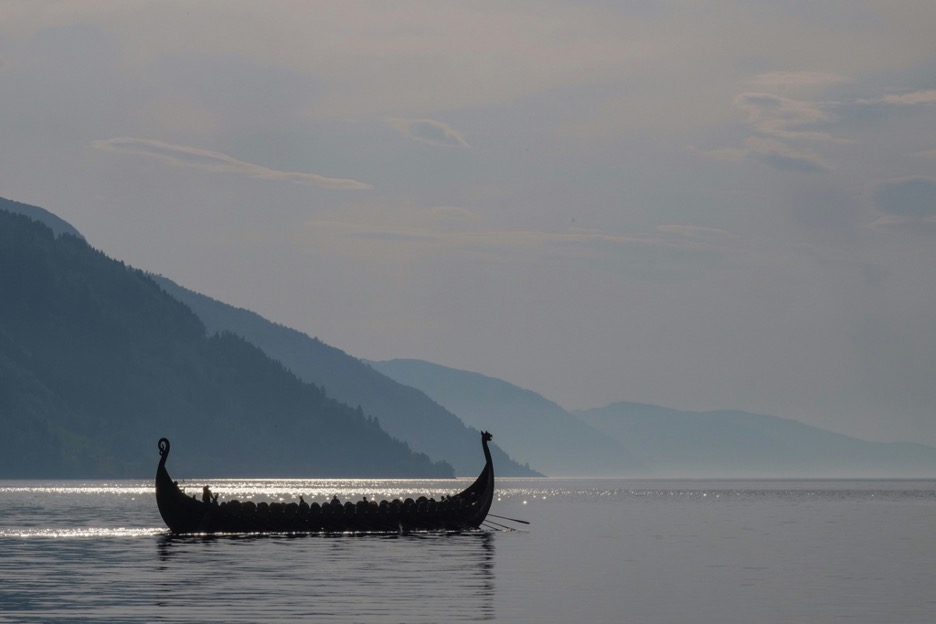The Viking Age, a period rich in history and mythology, provides an intriguing insight into the educational methods of antiquity. In contrast to the controlled educational systems of today, ancient Viking education was firmly grounded in the practical requirements of everyday living and the passing down of knowledge through spoken word. This article delves into the educational structure of the Viking Age, emphasizing the significance of mythology in educational contexts, the methodologies of Viking schooling, and the wider ramifications for comprehending Viking educational practices.
The Foundations of Viking Education
The Role of Family and Community
Education in the Viking Age began at home, with families and elders from the community serving as essential educators for the younger generation. Techniques vital for survival, such as farming, navigation, and craftsmanship, were transmitted through generations. This hands-on learning approach enabled Viking children to appreciate the importance of community and the significance of aiding in the survival and prosperity of their society. Given this context, one might question, what did the real Vikings look like? Not only in how they look but also in their daily routines, their social structures, and how they obtained the skills and knowledge needed to navigate their environment.
The real Vikings were multifaceted individuals, skilled in various trades and arts, deeply connected to their community, and embodying the Norse culture’s rich oral traditions and mythology. In such a system, the concept of outsourcing tasks that one could not manage due to other commitments was not alien. Just as a modern student might pay for assignment writing UK to manage their workload, Viking children would learn to delegate responsibilities within their community to ensure survival and prosperity.
Learning Through Stories and Sagas
Mythology and education were inseparable in the Viking Age. The Norse gods, heroes, and mythical creatures were not just subjects of fascination; they were integral to imparting moral lessons and historical knowledge. Through the oral tradition of storytelling, Vikings passed down wisdom, values, and cultural identity.
This method of teaching through stories is reminiscent of how today’s educators might incorporate narratives into lessons to engage students. It’s akin to transforming a write my essay cheap message into a compelling saga that captivates and educates, illustrating the timeless value of storytelling in learning.
The Structure of Viking Education
Practical Skills Over Classroom Learning
Viking schooling was largely experiential, focusing on hands-on skills crucial for Viking life. There was no formal schooling system as we know it; instead, learning was integrated into daily activities and responsibilities, ensuring that every young Viking was equipped with the knowledge needed to thrive in their environment.
This immersive approach to education highlights the benefits of experiential learning, where doing and experiencing are paramount. It’s a principle that modern educational systems continue to explore, emphasizing the value of practical experience alongside theoretical knowledge.
The Oral Tradition and Runes
While Vikings primarily relied on oral tradition for education, runes played a significant role in certain aspects of Viking education. Used for various purposes, from marking property to commemorating the dead, runes represent the Vikings’ unique approach to written communication.
In a society where oral tradition dominated, the ability to read and write runes was a specialized skill, somewhat parallel to how a student today might seek a write my essay request to professionals, recognizing the importance of expertise in specific areas of learning. Similarly, in today’s educational landscape, students often turn to trusted platforms for academic assistance. As a top player in the essay writing industry, EssayPay offers round-the-clock customer support for any inquiries about orders, ensuring that students can confidently navigate their academic challenges with the right support.

The Integration of Mythology in Viking Life
Mythology as a Learning Tool
The importance of mythology in education during the Viking Age cannot be overstated. Norse mythology provided a framework for understanding the world, human nature, and societal values. It was through these myths that Vikings explored concepts of bravery, loyalty, and the cyclical nature of life and death.
This emphasis on mythology in education underscores the power of narrative in shaping thought and behavior, a concept that remains relevant in today’s educational philosophies. Stories, whether ancient myths or modern literature, continue to be a vital tool in teaching and learning.
Subjects of Viking Education
Practical Skills and Seamanship
Viking schooling focused heavily on practical skills essential for daily life and survival. Seamanship was of particular importance, given the Vikings’ expertise in naval exploration and raiding. Young Vikings were taught to build, navigate, and maintain ships—a testament to the significance of the sea in Norse culture.
Warfare and Physical Training
The martial aspect of Viking life was also a critical component of their education. Young men and women were trained in the use of weapons and tactics, preparing them for potential conflicts and raids. Physical strength, endurance, and combat skills were highly valued, reflecting the harsh realities of the time.
Mythology, History, and Law
Knowledge of mythology, history, and law was also crucial. These subjects were taught through stories and sagas, which conveyed not only the myths and legends of the Norse gods but also historical events and legal principles governing Viking society.
Challenges in Viking Education
Limited Resources and Accessibility
The informal nature of Viking education meant that learning resources were limited to what was available in one’s immediate environment. This could lead to variations in the quality and extent of education received, depending on one’s family, status, and geographical location.
Balancing Educational Needs with Survival
The demanding lifestyle of the Vikings, particularly in harsher climates and during periods of conflict, often meant that survival took precedence over education. Young Vikings may have found themselves contributing to the household or community’s needs at an early age, leaving less time for learning.
Adapting Ancient Practices for Modern Education
Balancing Academic and Practical Learning
The Viking approach to education offers valuable lessons for the modern world, particularly in balancing academic learning with practical skills development. Just as Vikings learned through doing, modern education systems are increasingly recognizing the importance of skill-based learning and real-world applications.
Utilizing Resources for Academic Success
For student Vikings, mastering the art of navigation or swordsmanship might have been akin to tackling a challenging subject or project. In contemporary times, students have access to resources like hire someone to perform your assignment services, which can provide support in areas where they may struggle, echoing the communal approach to overcoming challenges seen in Viking society.
Conclusion
Learning during the Viking Age was multifaceted and deeply rooted in practicality, aimed at readying individuals for the challenges of their environment. Stemming from the educational system of the ancient Vikings, we understand the importance of practical experience, the effectiveness of storytelling, and the significance of community in education. These teachings remain impactful, offering ideas on how to improve modern education by incorporating practical skills, incorporating the practice of storytelling, and cultivating a supportive educational community.

